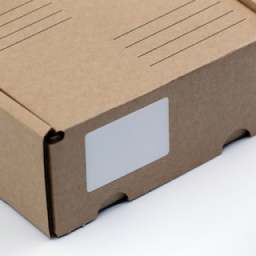Why We Celebrate 4th of July

As the nation celebrates our independence from the British – with fireworks, parades, barbecues and family gatherings – we separate the myth and reality behind our Fourth of July celebrations.
What Is Independence Day?
Independence Day is celebrated on July 4th throughout the United States and is often known as "the Fourth of July". It is the anniversary of the publication of the declaration of independence from Great Britain in 1776.

Believe it or not, the Declaration wasn’t actually signed on the Fourth of July, 1776. In fact, the iconic painting depicting the Founding Fathers and Continental Congress huddled together to present the first draft in Philadelphia isn’t at all accurate. The men in the picture did not assemble as shown.
July 4th, however, is the day the document was formally dated and finalized by the Continental Congress. They had officially voted for independence on the Second of July 2nd after Thomas Jefferson drafted the Declaration of Independence with the final wording agreed two days later.
This is the day Congress finally approved the motion made by Richard Henry Lee on June 7: “That these United Colonies are, and of right ought to be, free and independent States, that they are absolved from all allegiance to the British Crown, and that all political connection between them and the State of Great Britain is, and ought to be, totally dissolved.”
Lee's words were the impetus for the drafting of a formal Declaration of Independence, although the resolution was not followed up on immediately. On June 11, consideration of the resolution was postponed by a vote of seven colonies to five, with New York abstaining.
On July 3, John Adams wrote to his wife Abigail:
"The second day of July, 1776, will be the most memorable epoch in the history of America. I am apt to believe that it will be celebrated by succeeding generations as the great anniversary festival. It ought to be commemorated as the day of deliverance, by solemn acts of devotion to God Almighty. It ought to be solemnized with pomp and parade, with shows, games, sports, guns, bells, bonfires, and illumination, from one end of this continent to the other, from this time forward forevermore."

Congress also declared their intentions in a letter to King George III on July 2nd and this is the day that John Adams felt we should celebrate as the true Independence Day.
This is when the 13 American colonies severed their political connections to Great Britain.
Hancock and secretary Charles Thomson signed early printed copies of the declaration, but it was an updated version that was signed by the bulk of the other 54 men on August 2nd.
Initially, only 12 states (not 13) had approved the declaration. Two weeks later, on July 19, New York cast the 13th vote for independence.
How We Used To Celebrate Independence Day

In 1776, the Declaration of Independence led to military personnel and civilians tearing down a statue of King George III in Bowling Green, Manhattan. The statue was later melted down into bullets. The King’s effigy was burned in a mock funeral in Savannah, Georgia. Pulling down statues is frowned upon these days
A report in the Virginia Gazette in July, 1777 described the ringing of bells and fireworks and “order and decorum” during festivities to mark the first anniversary.
The oldest annual Fourth of July celebration is claimed by Bristol, Rhode Island, which has held Independence festivities since 1785 — 85 years before it Independence Day became an official annual holiday.
But Massachusetts was the first state to recognize the holiday on July 3, 1781.
The stars on the original American flag were in a circle so all the Colonies would appear equal.
The Fourth of July also marks the date when three of our US Presidents died and one was born.
Thomas Jefferson and John Adams both died on July 4, 1826 — 50 years to the day since the Declaration of Independence was adopted.
The nation’s 5th president, James Monroe, passed on July 4th, 1831.
The country's 30th Commander-in-Chief, Calvin Coolidge, was born on July 4, 1872.

Benjamin Franklin proposed the turkey as the national bird but he was overruled by John Adams and Thomas Jefferson, who recommended the bald eagle.
4 Best Places To See 4th of July Fireworks
1. New York
Macy's Fourth of July fireworks display will take place at the Brooklyn Bridge this year. The show is currently the largest pyrotechnic celebration in the U.S, and will begin sometime around 9pm.
2. Washington DC
Get patriotic in the US capitol. The National Mall Independence Day Celebration in Washington DC has multiple firework displays. One of the best viewing spots is from the Lincoln Memorial. 9pm.
3. Boston
The Boston fireworks display in Boston city will be accompanied by the legendary Boston Pops Orchestra with the real cannon fire. The concert begins here at 8 pm and the fireworks start around 10.30 pm.
4. California
Watching the fireworks show on from Lake Tahoe with the Nevada mountains as a backdrop to the location will be hard to beat.
Philadelphia, Nashville, Atlanta, Dallas and New Orleans are just some of the other places holding excellent celebrations complete with a fireworks show.

When Celebrations Became A Thing
It wasn’t until almost 100 years after the Declaration of Independence, in 1870, that July 4th was made an official unpaid federal holiday by Congress. In 1938, Congress changed Independence Day to a paid federal holiday.
Nowadays, there are around 15,000 fireworks celebrations each year with some of the bigger cities spending millions of dollars on fireworks alone.
Every 4th of July the Liberty Bell in Philadelphia is tapped but not rung 13 times in honor of the original thirteen colonies.
And let’s not forget the 150 million hot dogs that get consumed as over 300 million Americans celebrate.
Happy Fourth of July everyone.






















